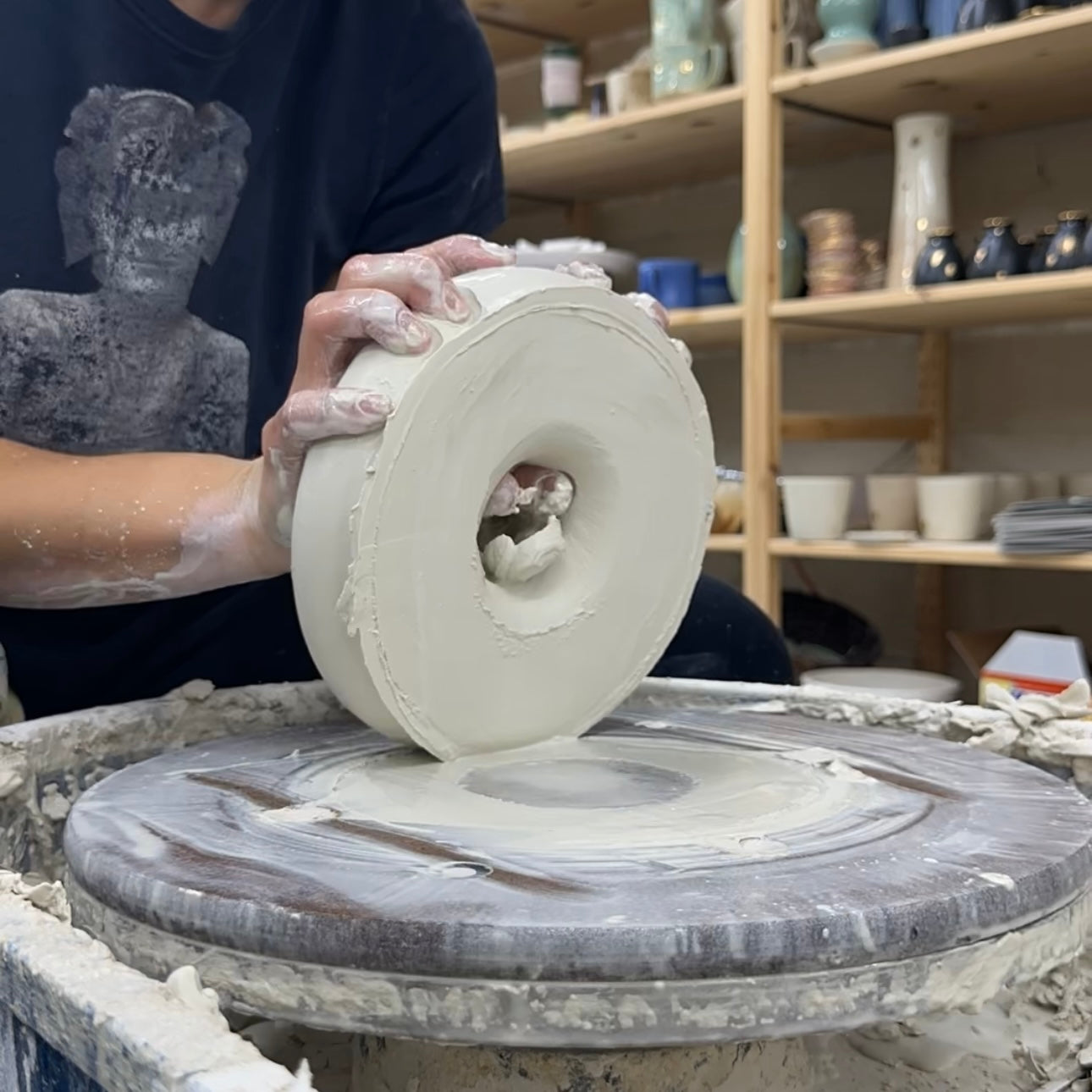Only the potter knows how many broken pots line the road to the perfect one.
Montaigne (Philosopher from the 16th century, pretty big deal Stoic) once wrote that to learn philosophy is to learn how to die. In that same vein, to learn pottery is to learn how to fail.
And fail you will.

There’s no potter in the world that picks up clay and creates the perfect pot every-time; no matter what social media today may show. Handmade pottery is expensive not because of the materials, but because of the artist’s resilience in the face of failure-- And that lesson doesn’t come cheap.
To learn pottery is to be confronted with defeat after defeat, by your own hand and by the work of another (aka the kiln). You are both in control and out of control during every step of the process, and every element can be seen as both friend and foe.

What makes the art of pottery unique is its opportunity to learn failure-- Not only to learn how to fail but to take that failure and alchemically turn it into resilience.
In an art that’s instantaneous in its results, mistakes can be seen immediately and either solved or discarded without putting any more energy into them. But with ceramics, one truly doesn't know till the very end if all that hard work was all for naught.
Take for example a mug, everyone loves a good mug! But that mug has the opportunity to go wrong a million times in the process of making it.
Every spin on the wheel, and every layer of clay eventually trimmed away is an opportunity for the clay to say “not today.” Personally, I’m grateful when these sorts of failures happen. They are immediately visible and inarguable.
But then comes the unseen…

Put a piece in the kiln too wet, and you’ll have an explosion. Pack a kiln too tight, and every rim will dance to the fire like it’s a rave, rather than the waltz you intended.
There’s a joke in the clay world all potter’s know—you should “pray to the kiln gods” because you can never be absolutely sure everything will go your way after a kiln is fired. It only takes the potter one lesson to learn, even though you control the kiln; you can’t always control what happens in it.
That’s why we love kiln opening days-- to see what kind of alchemy happened away from our curious eyes! Even though it’s all chemistry, it’s so magical. We wait with such anxiety for the kiln to cool so we can both see the changes in material and to see how many pieces survived!

Firing a kiln to such high temperatures and surrendering a massive amount of your work to such force, takes a real practice in stoicism to get through it.
Because when things go wrong, it’s crushing. A large kiln can have weeks of work in its chamber. When things go wrong, those weeks can feel like they were a complete waste.
But it’s all a part of the art of ceramics, isn’t it? Being the creator sitting in a happy balance of total control, and knowing in the end, sometimes you have none.


Leave a comment